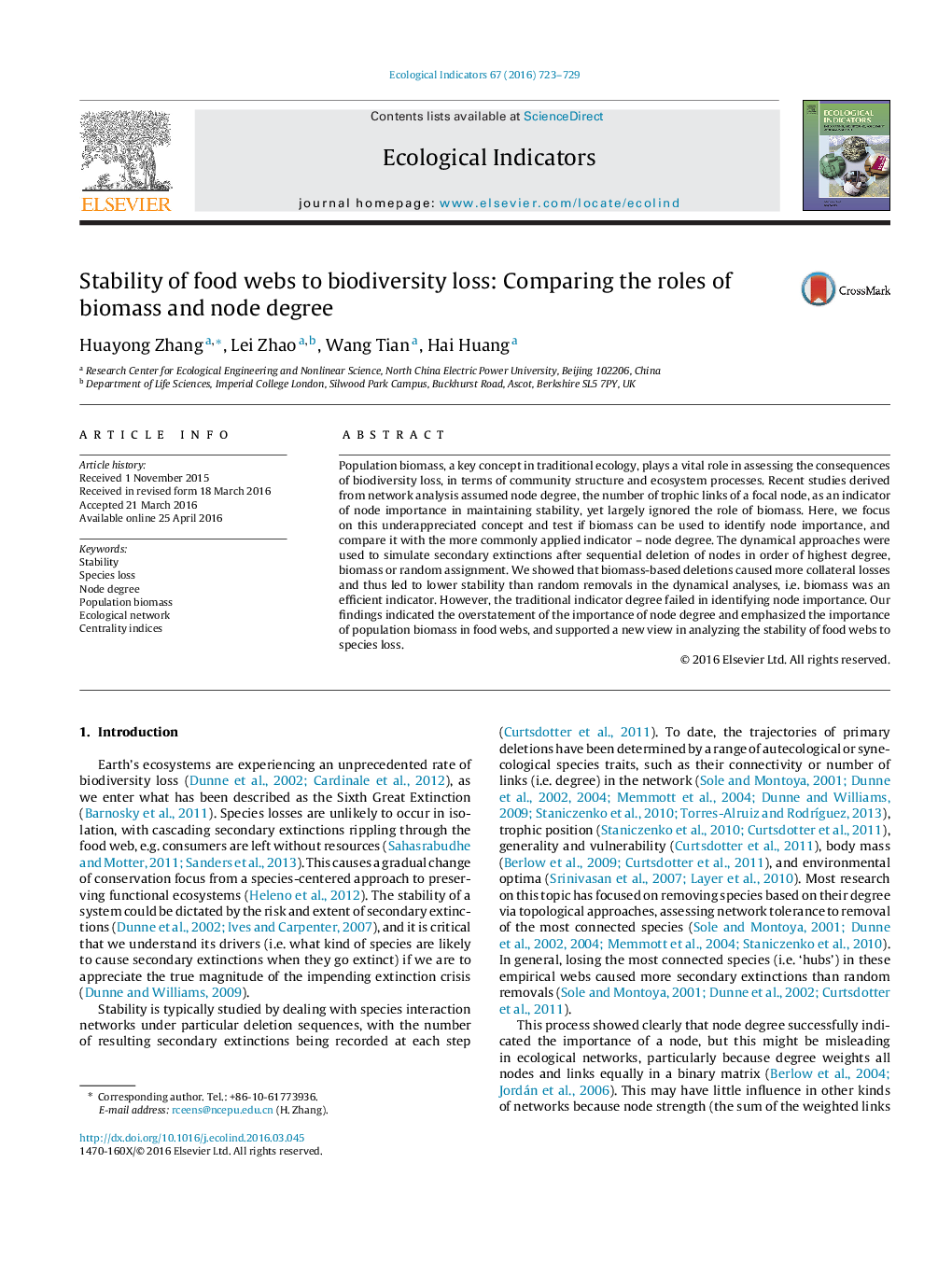| Article ID | Journal | Published Year | Pages | File Type |
|---|---|---|---|---|
| 4372917 | Ecological Indicators | 2016 | 7 Pages |
•A dynamical energy-flow model was constructed to simulate secondary extinctions.•Sequential deletions of large biomass nodes caused more damage to stability.•Node degree failed in detecting node importance for community stability.
Population biomass, a key concept in traditional ecology, plays a vital role in assessing the consequences of biodiversity loss, in terms of community structure and ecosystem processes. Recent studies derived from network analysis assumed node degree, the number of trophic links of a focal node, as an indicator of node importance in maintaining stability, yet largely ignored the role of biomass. Here, we focus on this underappreciated concept and test if biomass can be used to identify node importance, and compare it with the more commonly applied indicator – node degree. The dynamical approaches were used to simulate secondary extinctions after sequential deletion of nodes in order of highest degree, biomass or random assignment. We showed that biomass-based deletions caused more collateral losses and thus led to lower stability than random removals in the dynamical analyses, i.e. biomass was an efficient indicator. However, the traditional indicator degree failed in identifying node importance. Our findings indicated the overstatement of the importance of node degree and emphasized the importance of population biomass in food webs, and supported a new view in analyzing the stability of food webs to species loss.
